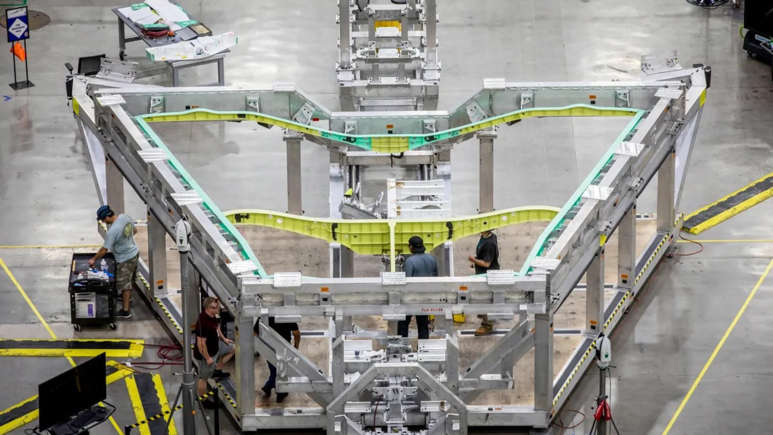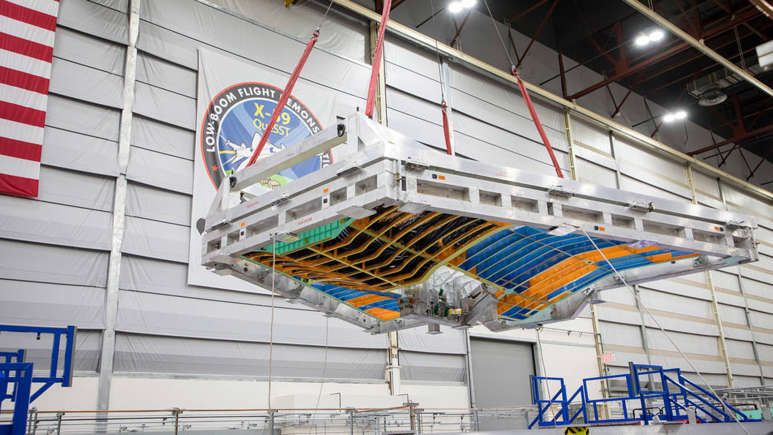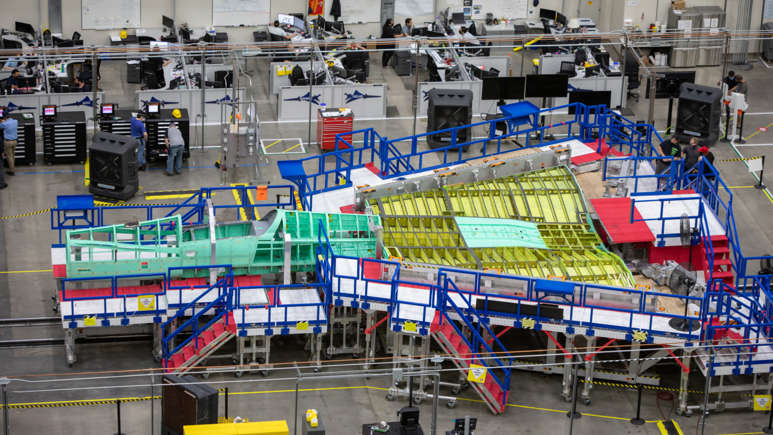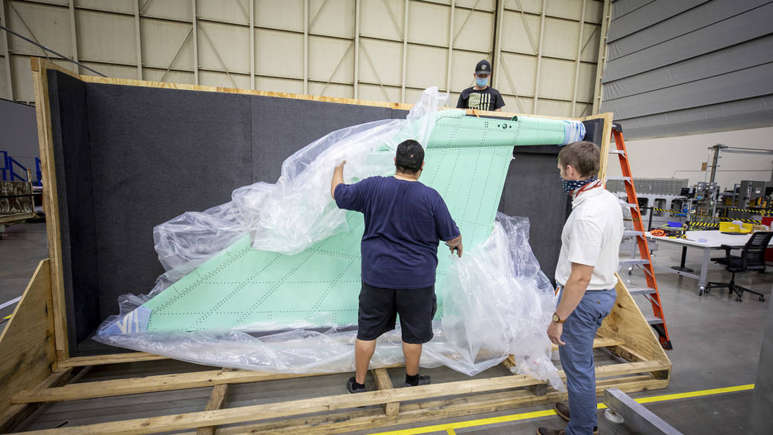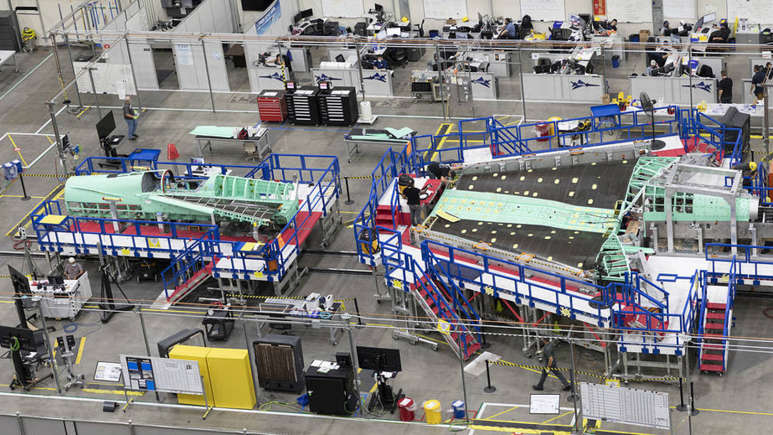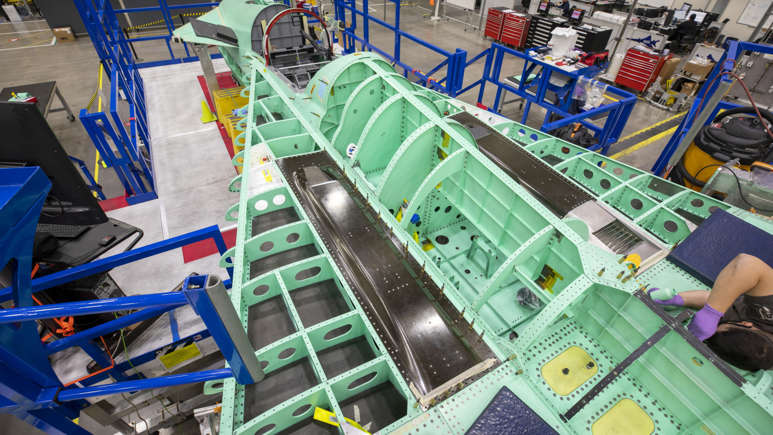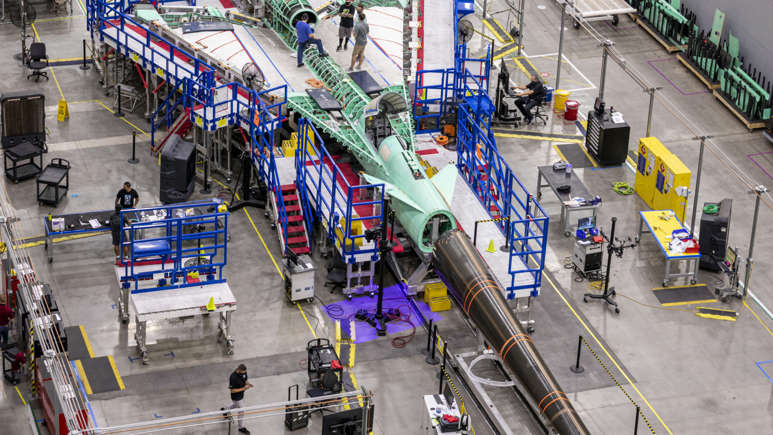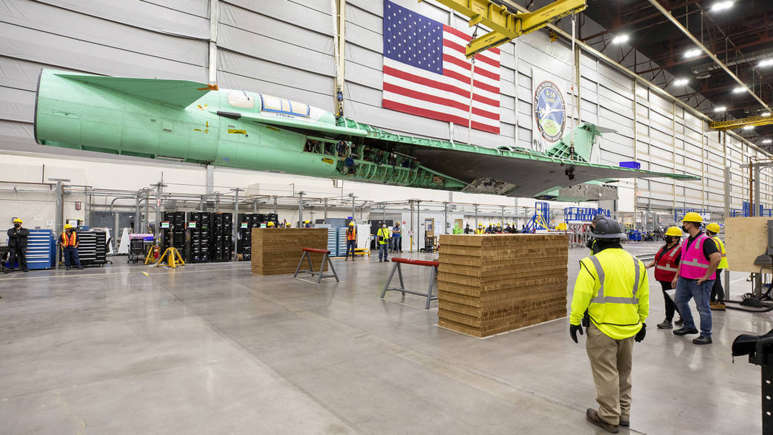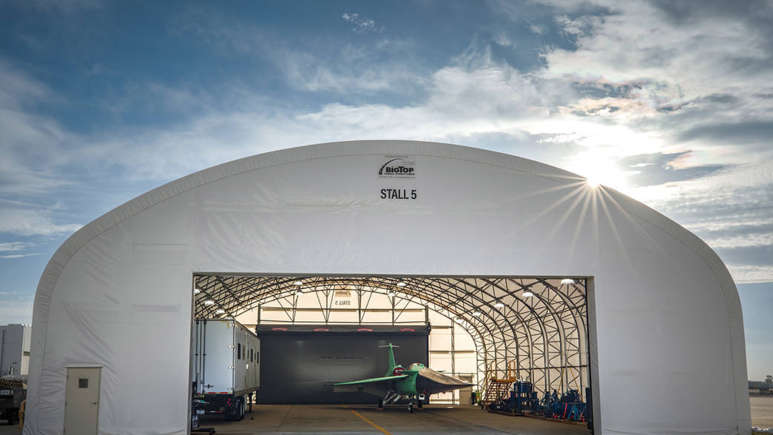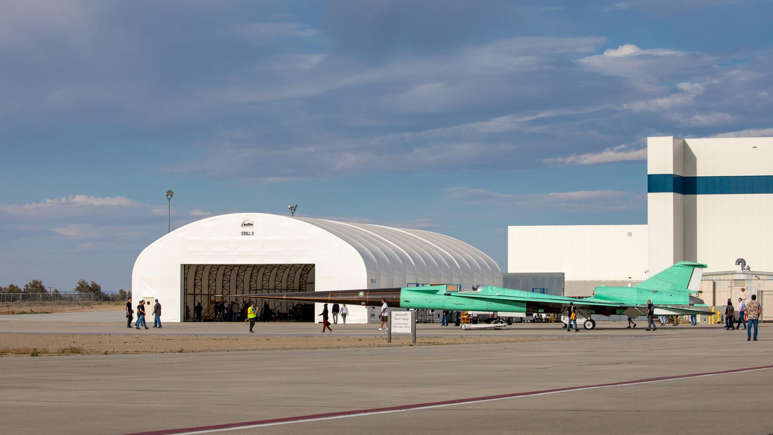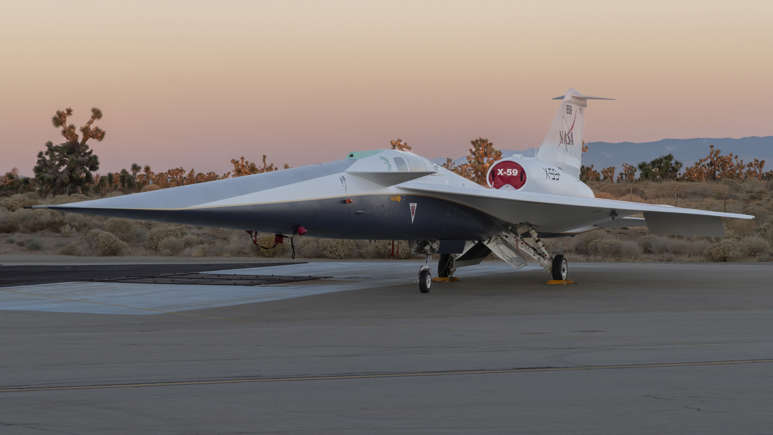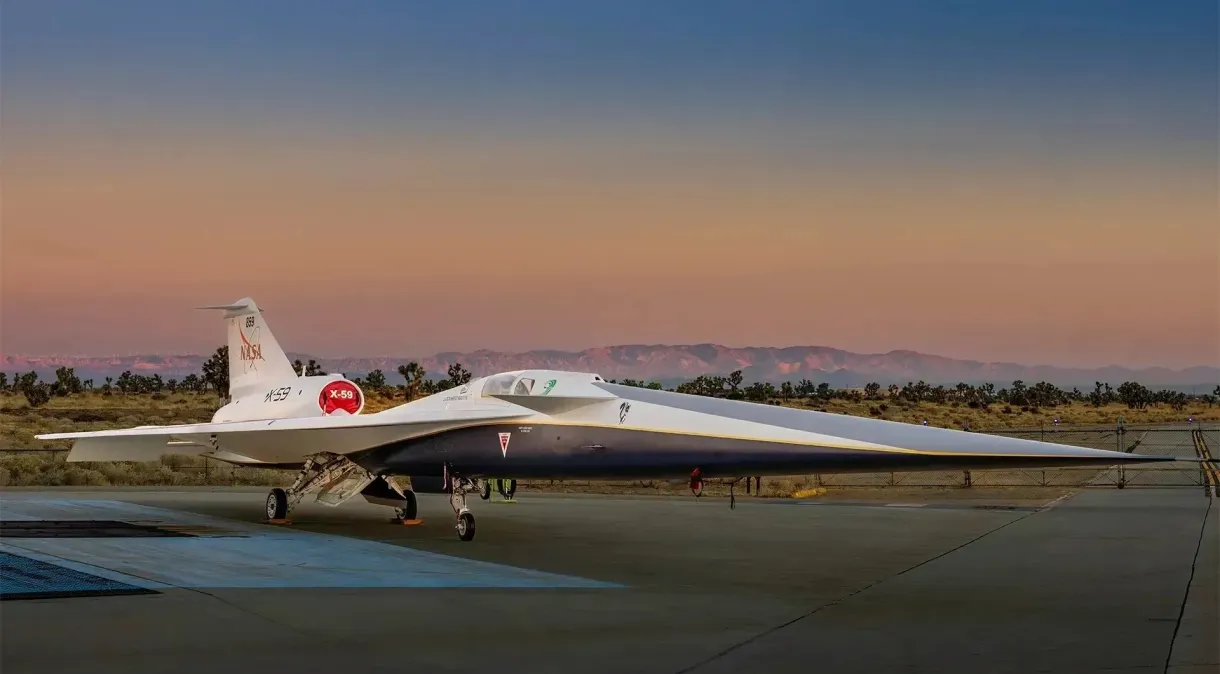NASA has unveiled the X-59, a supersonic jet that is the result of a six-year partnership with Lockheed Martin. The plane aims to overcome the sound barrier silently, avoiding the sonic boom traditionally associated with supersonic aircraft. At 30.3 meters long and 8.99 meters wide, the X-59 has a conical nose that will break up shock waves, avoiding the characteristic boom. Equipped with a General Electric engine, the jet can reach speeds of over an incredible 1,440 km/h, and flight tests are expected to begin later this year.
The X-59 is part of NASA’s Quest mission, based in Palmdale, California, and aims to collect data that could revolutionize air travel, making it possible to create commercial aircraft capable of travelling faster than the speed of sound.
The Quest mission not only seeks to develop the X-59, but also aims to prove the feasibility of supersonic flight without the characteristic sound impact that led to a ban on supersonic flight over the Earth more than 50 years ago. The results of the tests will be shared with regulators and the industry, and may even influence the revision of speed limits for civil aircraft based on the X-59’s sound perception.
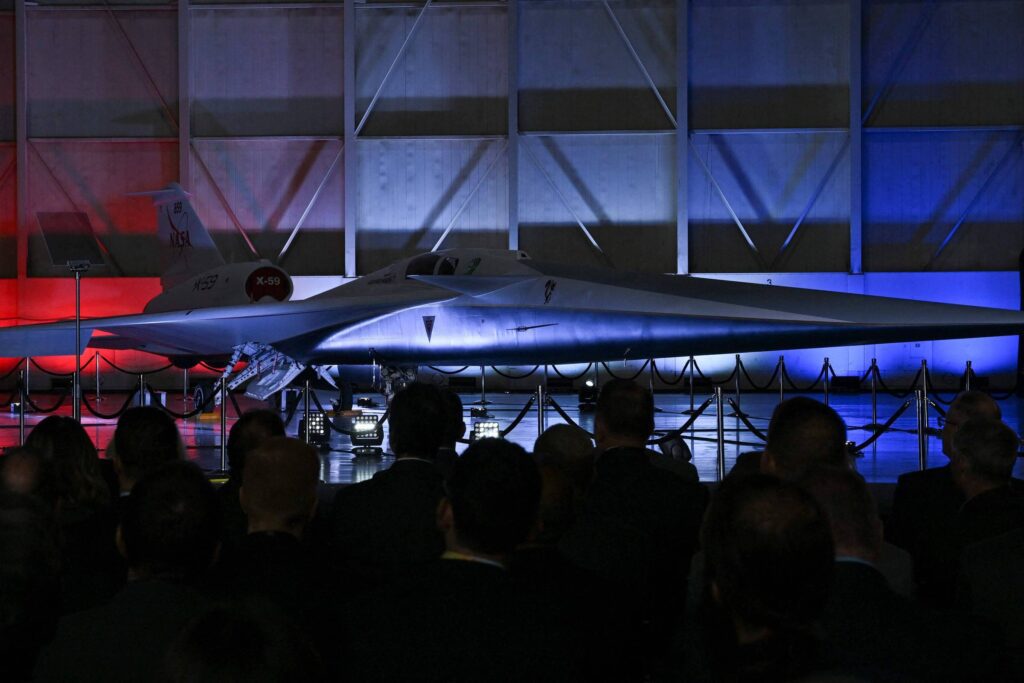
Quiet SuperSonic Technology
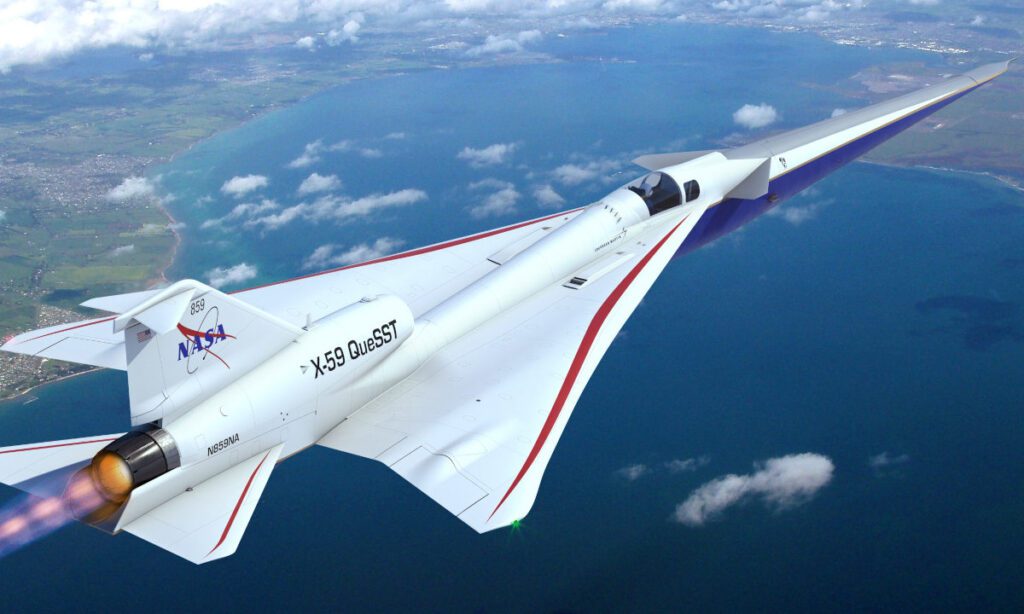
The Lockheed Martin X-59 QueSST (“Quiet SuperSonic Technology”) is an experimental American supersonic aircraft being developed at the Skunk Works for NASA’s Low-Boom Flight Demonstrator program. Construction of the X-59 QueSST has been completed at Lockheed Martin’s facilities in Palmdale, California, and it is designed to fly at supersonic speeds – approximately 660 mph at sea level – without producing a sonic boom.
It is also a new aircraft belonging to the USAF’s family of experimental aircraft known as X-planes. The new experimental aircraft will have a slender fuselage with a single jet engine (positioned below the vertical stabilizer), tricycle landing gear similar to that installed on the F-16 fighter and a long nose – which will act as a silencer when the plane breaks the sound barrier. It is estimated that the sonic boom (noise) coming from the shock wave generated by the aircraft will sound similar to the closing of a car door, producing only 75 decibels.

